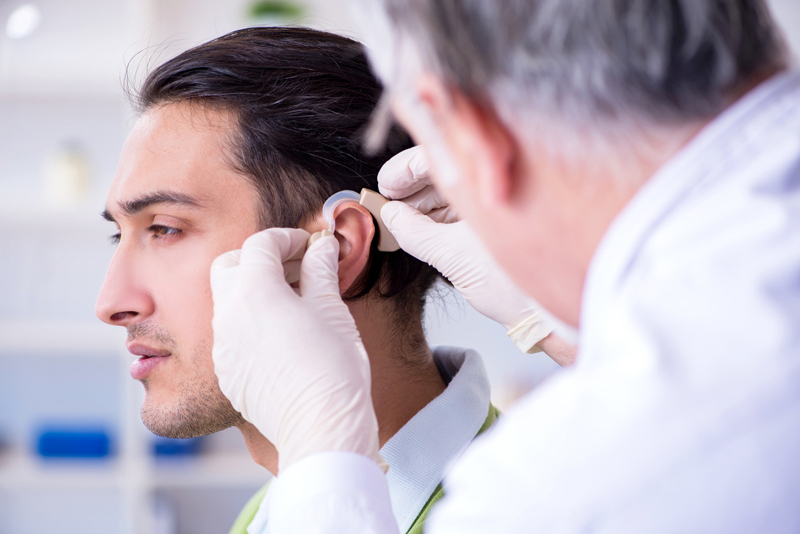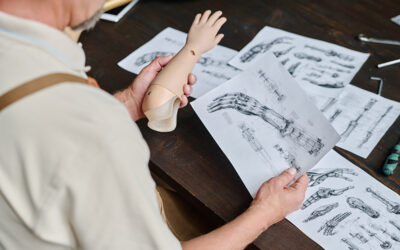Regarded as one of the most common causes of progressive hearing loss, otosclerosis is a condition that occurs due to abnormal bone growth around one of the three small bones in the middle ear space (called the stapes). The presence of this bone prevents the complex structures within the ear from working properly thereby causing severe hearing loss. The abnormal bone growth disrupts the complex series of energy transformations that allow people to normally hear. For some people with otosclerosis, the hearing loss may become severe. According to reports, about 3 million adults in the United States have otosclerosis. Also called otospongiosis, the condition is one of the most causes of middle ear hearing loss in young adults and may affect either one or both ears. The condition has been found to affect people of all age groups and genders. However, the condition typically begins in early to mid-adulthood and is more common in women (between the age group of 20-45 years) than men. Billing and coding for this hearing loss condition can be challenging. Physician or specialists treating this condition must comprehensively document the symptoms, causes, diagnosis and treatment procedures offered. Medical billing and coding companies can help physicians treating this condition with accurate documentation.
The exact cause of this condition is unknown. However, research suggests that otosclerosis tends to run in families and may be hereditary, or passed down from parent to child. People with a family history of this condition are more likely to develop the disorder. On an average, a person who has one parent with otosclerosis has a 25 percent chance of developing the disorder. However, if both the parents have otosclerosis, the risk can even go up to 50 percent. In fact, about 60 percent of otosclerosis cases have a genetic predisposition. Even though, the condition may affect both ears but it is more common for one ear to be more severely affected than the other. If left untreated, hearing loss typically worsens progressively until late middle age when complete deafness occurs.
How Does Otosclerosis Cause Hearing Impairment?
Normally, otosclerosis affects the last bone in the chain – called the stapes – which rests in the entrance to the inner ear (the oval window). The abnormal bone preoccupies the stapes in the oval window and interferes with sound passing waves to the inner ear. The condition can cause different types of hearing loss. In fact, the type of hearing loss can depend on which specific structure within the ear is affected. Hearing loss is progressive and usually begins in early adulthood. However, children can also be affected and in rare situations, otosclerosis can occur at or very near birth. Pregnancy can also cause the disease to accelerate where in many women do not notice the loss of hearing until during or shortly after pregnancy. In some cases, the condition may also cause conductive (or occasional mixed) hearing loss – where in the inner ear hears normally, but sound is not properly conducted through the middle ear. As the stapes bone becomes stiffer, the hearing loss becomes more pronounced.
Symptoms of Otosclerosis
As otosclerosis is considered a younger person’s disease, symptoms typically crop up between the age group of 20 – 30 years. Even though, the condition can lead to severe hearing loss, it rarely results in total deafness. Hearing loss is one of the most common symptoms associated with the condition. The loss of hearing may appear very gradually. People may initially notice that they cannot hear low-pitched sounds or they can no longer hear a whisper. In addition to loss of hearing, people may also experience other symptoms like –
- Ringing, roaring, buzzing, or hissing in the ears or head (known as tinnitus)
- Speaking quietly as the voice sounds loud to you
- Particular difficulty hearing low, deep sounds and whispers
- Finding it easier to hear when there is background noise (unlike many other types of hearing loss)
- Vertigo or dizziness
How to Diagnose and Treat Otosclerosis?
Diagnosis of this condition begins with a detailed physical examination by an otolaryngologist or otologist to analyze the diseases or other health problems that may cause these same symptoms. In addition, audiologists use a variety of tests and procedures to assess hearing and balance function. An audiologist may produce an audiogram (a graph that shows a person’s hearing sensitivity) and a tympanogram (a graph that shows how well the middle ear functions to conduct sound). In some cases, a CT scan may be recommended as there are a number of disorders that cause hearing loss.
Treatment modalities for otosclerosis may depend on the person’s type of symptoms, a person’s specific circumstances and the degree or severity of the symptoms. Treatment approaches used to treat or manage otosclerosis include – hearing aids (help compensate for the hearing loss), sodium fluoride supplements (dietary supplements) and bone-anchored auditory implants. In severe cases of otosclerosis, surgery may be performed. Common surgical options include – stapedotomy and stapedectomy. In stapedotomy, either the part of the stapes with the abnormal bone growth is removed in order to insert a tiny implant. On the other hand, in stapedectomy, the entire stapes bone is replaced by a small prosthesis. Both surgical procedures can restore hearing. However, it is important to discuss the risks and complications of the procedure with the patient before performing the procedure. Pain after the surgery is usually minimal but can vary. In some cases, patients may experience dizziness for the first few days after the surgery. Taste sensation may also be altered for several weeks or months following surgery, but usually returns to normal.
All diagnoses, screening and treatment procedures must be carefully documented using the correct medical codes. Billing and coding services offered by established medical billing companies can ensure the correct codes on the medical claims. ICD-10 diagnosis codes for otosclerosis include –
- H80 Otosclerosis
- H80.0 Otosclerosis involving oval window, nonobliterative
- H80.00 Otosclerosis involving oval window, nonobliterative, unspecified ear
- H80.01 Otosclerosis involving oval window, nonobliterative, right ear
- H80.02 Otosclerosis involving oval window, nonobliterative, left ear
- H80.03 Otosclerosis involving oval window, nonobliterative, bilateral
- H80.1 Otosclerosis involving oval window, obliterative
- H80.10 Otosclerosis involving oval window, obliterative, unspecified ear
- H80.11 Otosclerosis involving oval window, obliterative, right ear
- H80.12 Otosclerosis involving oval window, obliterative, left ear
- H80.13 Otosclerosis involving oval window, obliterative, bilateral
- H80.2 Cochlear otosclerosis
- H80.20 Cochlear otosclerosis, unspecified ear
- H80.21 Cochlear otosclerosis, right ear
- H80.22 Cochlear otosclerosis, left ear
- H80.23 Cochlear otosclerosis, bilateral
- H80.8 Other otosclerosis
- H80.80 Other otosclerosis, unspecified ear
- H80.81 Other otosclerosis, right ear
- H80.82 Other otosclerosis, left ear
- H80.83 Other otosclerosis, bilateral
- H80.9 Unspecified otosclerosis
- H80.90 Unspecified otosclerosis, unspecified ear
- H80.91 Unspecified otosclerosis, right ear
- H80.92 Unspecified otosclerosis, left ear
- H80.93 Unspecified otosclerosis, bilateral
- H80.0 Otosclerosis involving oval window, nonobliterative
People suffering from this disorder should communicate with their physicians about the challenges they are facing and seek appropriate professional support. In addition, following a healthy lifestyle coupled with a regular exercise regime, healthy diet, adequate sleep pattern, avoiding nicotine and reducing stress can help better manage the symptoms and other complications associated with this hearing disorder.
Medical billing and coding can be challenging. Accurate clinical documentation of causes, types, symptoms and other procedures is vital to ensure accuracy in coding and billing. An experienced medical billing company can help physicians assign the right medical codes for this hearing disorder and ensure optimal reimbursement.




